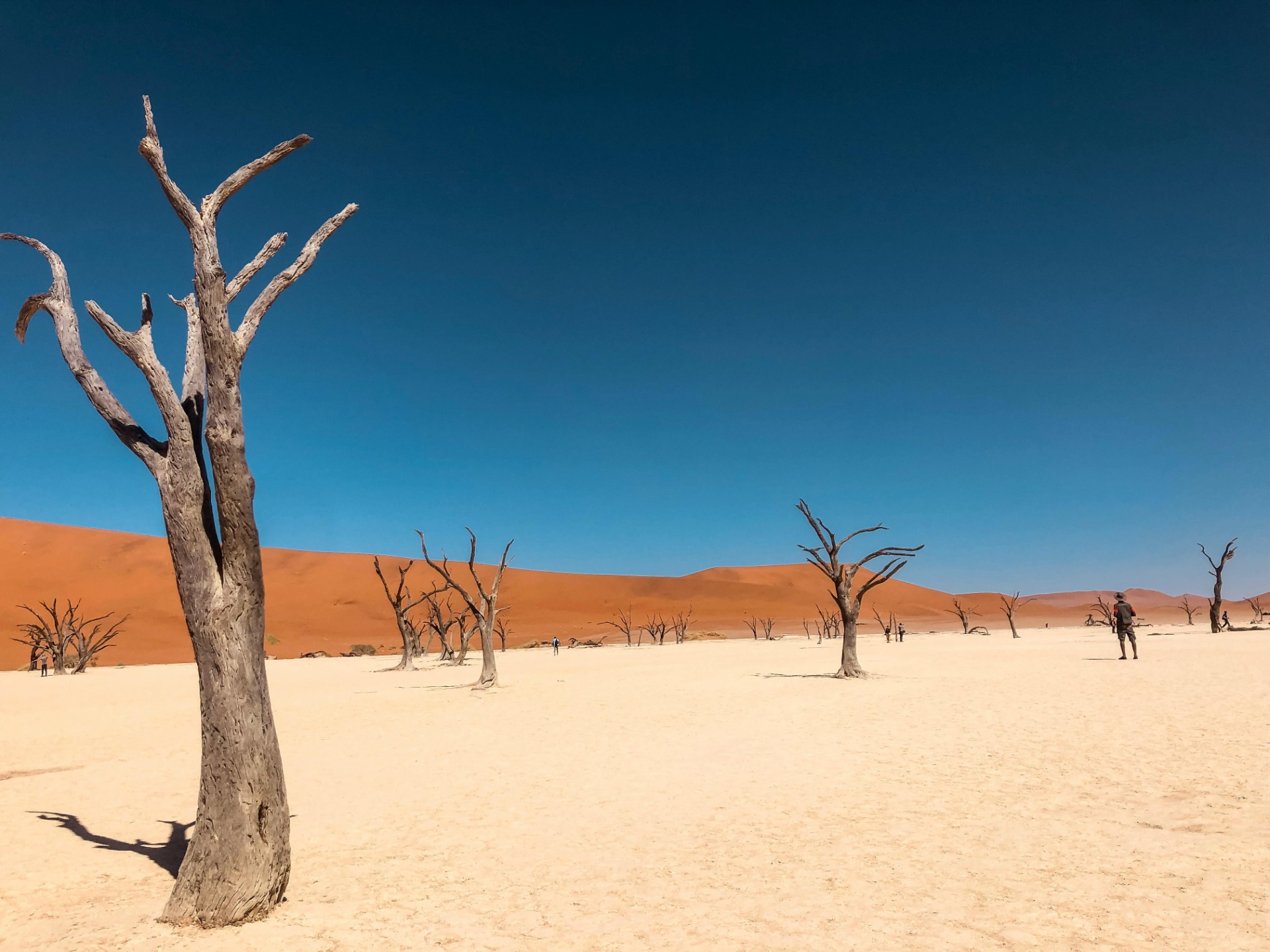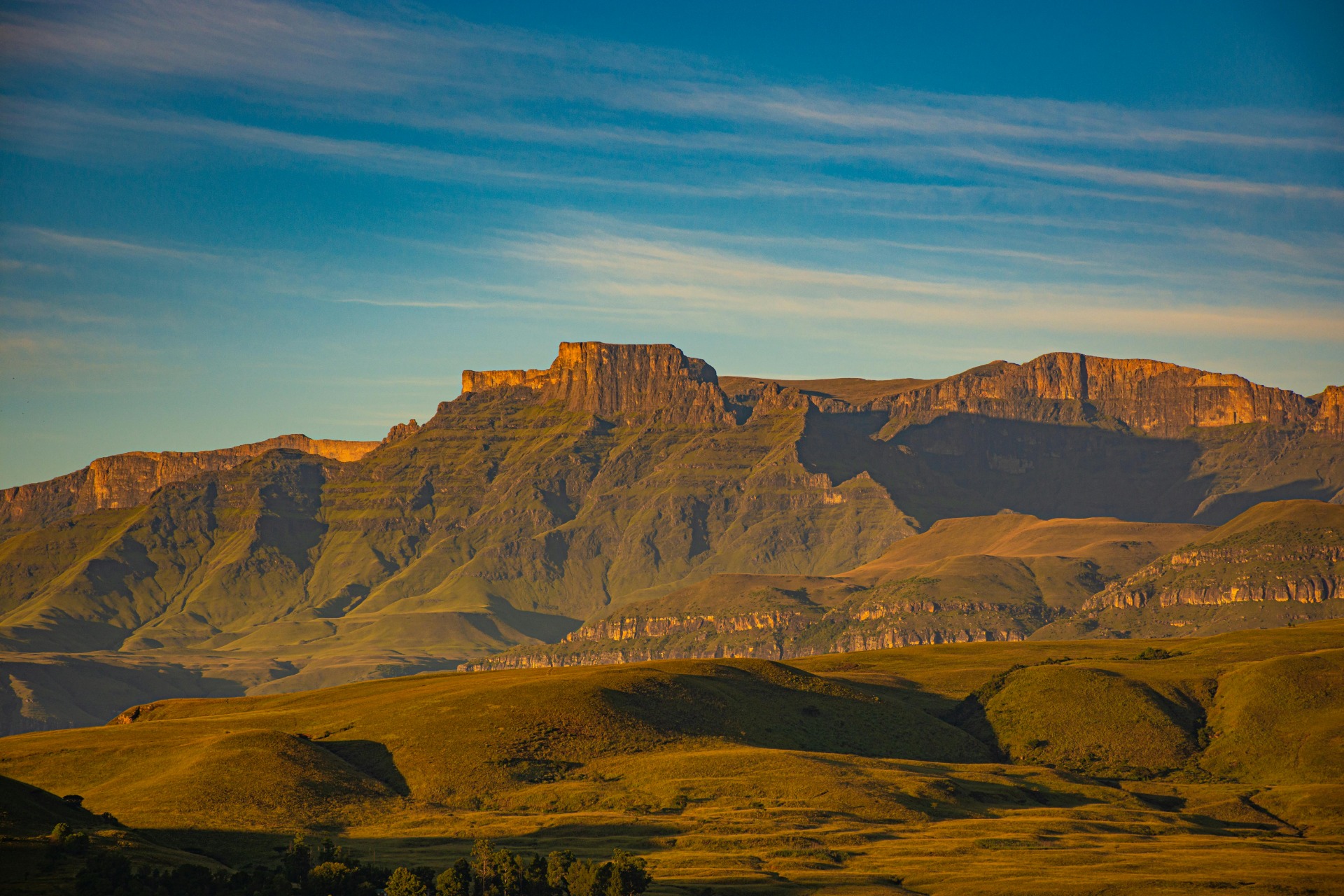South Africa rises due to extreme drought
Up to two millimetres per year. At that rate the earth's crust in South Africa rises. Usually, slow geological processes cause vertical land movements, but in the case of South Africa, the rising trend is due to climate change. A team from the University of Bonn has shown that drought, such as the extreme Day Zero drought in Cape Town, has triggered the uplift. Here is a deep dive in the causes and implications.
Kathelijne Bonne. Translation of an article first published in Dutch in the Belgian science magazine EOS Wetenschap (7/8 2025).
The land surface of South Africa rose a total of six millimetres between 2012 and 2020. Initially, this uplift was attributed to deep movements in the Earth's mantle. The latter processes do play a role – in fact, plate tectonics is the typical cause for uplift. But in times of global change, when human impact is increasing, other factors can play a role too. And as techniques are more accurate than ever, such factors can now be measured. This enables us to better understand uplift over short, human time scales.
In Bonn a team of scientists suggested that the upward movement of the Earth's crust could well be the result of the disappearance or extraction of surface and groundwater. According to their hypothesis, this net loss of water makes the earth's crust lighter, allowing it to rise. We spoke to Christian Mielke, a German geodesist and lead author of a study in the Journal of Geophysical Research: Solid Earth: "We have evidence that the uplift can indeed be attributed to drought and climate trends."
Uncharted territory
Even in times of severe water shortages we don't yet fully understand how drought affects the vertical movements of the earth's crust. "Doing so is particularly crucial in flat areas close to sea level such as Flanders and the Netherlands. Small movements can have major consequences." says Mielke, "And as geology and geography vary, each region must be studied locally. Furthermore, drought and overexploitation of aquifers can cause both uplift and subsidence." While the latter is better understood, uplift due to drought is uncharted territory.
The uplift seen in South Africa is an elastic response, a bouncing up, of the solid earth – the hard, non-living part of our planet. This phenomenon is not yet well studied. Only in the southwestern United States, where extreme drought waves are common, links between uplift and climate are proven. During the drought of 2011 to 2015, the Sierra Nevada rose 24 millimetres in response to a loss of 17 millimetres of water over a large area. We are now seeing this in South Africa.

Deep dynamics?
Land uplift is a normal geological process, an echo of the deep dynamics of our planet. But it proceeds immensely slowly and is imperceptible during human lifetimes. In high mountains, uplift can exceed ten millimetres per year. Over millions of years this adds up to kilometres, such as in the Himalayas: marine layers full of fossil sea lilies rose to eight km above sea level. Far from plate boundaries, uplift is less than one millimetre per year unless magma wells up from below. That explains why large parts of Africa stand unusually high, the whole continent is buoyed by a deep, hot anomaly in the mantle. South Africa forms a striking high plateau with dramatic escarpments, partly sculpted by massive basalt outpourings.
However, uplift triggered by drought has nothing to do with the Earth's interior. The driving force is a form of "crustal rebound", the elastic rebound of the Earth's crust. The removal of weight upsets the isostatic equilibrium of the earth's crust, which bounces up to restore the equilibrium. This phenomenon can be well illustrated by an air mattress on a swimming pool. When you roll off, the air mattress bounces back up. The same thing happens to the earth's surface, but in slow motion. This phenomenon is usually cited in the context of land ice. Today, millennia after the melting of Pleistocene land ice, Norway, for example, is still bouncing back up. And now that human activities are accelerating the melting, scientists are observing accelerated bouncing back in both Greenland and Iceland. Drought causes a similar yet more subtle trend.
At millimetre scale
The ever-increasing resolution of measuring instruments allows us to observe the movements of the Earth's crust at millimetre scale. The total uplift is the sum of various mechanisms, yet the team in Bonn succeeded in isolating the signal linked to drought.
Mielke and his colleagues used data of TrigNet, the South African network of satellite ground stations, which is connected to the Global Navigation Satellite System (including GPS). The density of the network varies across the globe. Within Africa, South Africa is best suited to study variations in elevation. Moreover, this country has little seismic activity, hence limiting geological "background noise". For this reason, and also because South Africa has undergone extreme climate fluctuations, this country is a good test case for finding out how drought contributes to crustal rebound.
Day Zero
South Africa's many droughts are caused by the El Niño/Southern Oscillation (ENSO), the weather system that originates in the Pacific Ocean and is intensifying due to climate change. A decade ago, drought in South Africa spiralled out of control. An extreme drought took hold in 2015, affecting both agriculture and the water supply of major cities such as Cape Town, Johannesburg and Pretoria. Falling water levels in the reservoirs, combined with an expanding population, led to several water crises.
The ominous concept of Day Zero spread like wildfire from 2017 onwards. On Day Zero the water level in the large reservoirs near Cape Town would fall below thirteen per cent, and supply to households would be cut off. The population would then have to queue for a daily ration. Thanks to severe restrictions, Day Zero was repeatedly postponed. The water crisis was averted when rain finally came.
Panta rei
Does solid earth bear the signs of the day zero drought? To find out, the researchers mapped the changes in elevation of the land at many places in South Africa (using the TrigNet GPS ground stations, operational since 2000). This gave an initial glimpse of vertical movements through time. However, the fact that the land is rising or falling does not in itself prove anything, as other geological processes may be at play. A link between uplift and drought had to be demonstrated.
Firstly, the elevation data were converted into total water storage, a measure of the weight of water. To account for the earth's response, the model incorporated the rheological properties of the crust – the way rock deforms under pressure (from the Greek rhei, "to flow", as in panta rhei). To validate the findings, the calculations were repeated using independent sources, i.e., data from the GRACE mission (Gravity Recovery and Climate Experiment). The close agreement confirmed the reliability of the results, which were expressed in a series of maps and time series. These were then compared with hydrological data, leading to a clear and consistent outcome.

El Niño drought, La Niña rain
A clear trend emerged. The rise and fall of the Earth's surface were synchronous with dry (El Niño) and rainy (La Niña) episodes in South Africa. A peak occurred in 2006, when the land subsided under the weight of water during a prominent La Niña period of precipitation. La Niña also caused the downward trend seen between 2010 and 2012.
The Day Zero drought on the other hand – attributed to El Niño – caused a land surface rise due to water loss from 2015 until 2021. Overall, the trend across South Africa has been rising since 2000, with a total of six millimetres between 2012 and 2020. The largest increase, ten millimetres, was measured in the province of Gauteng, which includes Johannesburg and Pretoria, cities that extract massive amounts of water from large reservoirs.
The bottom line is that "deformation of the Earth's crust is strongly influenced by hydrology," says Mielke. "In South Africa, our GPS inversion method shows a strong correlation with drought and even with the course of ENSO. Moreover, the method can also be used elsewhere to map water reserves, or the disappearance of it, for example near large cities. In Gauteng, for example, 450 millimetres of water went up in smoke. However, having a dense network of ground stations is key for representative calculations. So far, only GRACE can provide an overall picture of global water loss due to drought, but its spatial resolution is much lower than that of our method. In an ideal scenario, the various techniques are used together to better understand the roles of deep groundwater, soil moisture and surface water in reservoirs."
Opposed forces
Land may rise due to drought. But at the same time, also sea levels are rising. We can already hear the climate sceptics thinking: the two cancel each other out, problem solved. But Mielke urges us to remember that "drought should never be something you hope for in order to escape rising sea levels. Droughts bring other problems, such as crop losses, damage to ecosystems and severe water shortages. Furthermore, drought-induced uplift is not a process that continues indefinitely. At a given point, there is no more water and the uplift stops, while the sea level can continue rising." By way of comparison, during the warm Cretaceous period, sea levels were more than 200 metres higher than they are today.
Another phenomenon linked to drought is land subsidence due to the collapse of aquifers. We asked Mielke about this apparent paradox: what determines whether the ground rises or falls? "Both are possible, but whether the ground rises or falls depends on what are known as poroelastic properties – a measure of how "strong" the subsoil is. When water is extracted, the underground cavities (the pores) lose their support, causing them to collapse. The result is land subsidence and loss of water storage capacity, both of which are irreversible. Which phenomenon is dominant depends on the subsoil and how the water is distributed across deeper layers, soil and surface. Using our GPS method, we recorded a net vertical movement for South Africa, which is generally increasing. In this case, we were able to reliably attribute the upward movement of the solid earth to drought. But each region needs a tailor-made approach to link vertical movements to specific phenomena."

San Andreas Fault, Lorca earthquake
To see the bigger picture, professor of plate tectonics Douwe van Hinsbergen and lecturer in physical geography Wiebe Nijland gave their views. Both work at Utrecht University and are not involved in Mielke's work. Van Hinsbergen emphasises that "we cannot significantly change the large-scale movements of the tectonic plates, but we can trigger or accelerate certain processes. In the Sierra Nevada in the US, we see that uplift caused by drought and water extraction may slightly alter the stress field around the San Andreas Fault, a phenomenon that may also have triggered an earthquake in southern Spain (Lorca). However, such active faults are not known to exist in South Africa. It therefore seems that the potential risks to society in South Africa are minimal."
Nijland confirms this idea: "Because this is a cyclical, elastic movement, namely uplift during drought and subsidence after the water reserves have recovered, there are probably no relevant long-term effects. The upward and downward movements cancel each other out. In addition, the measured differences in height are so small that there are unlikely to be any immediate consequences for humans or nature.
The message is that this effect is measurable and can be used to identify regional and cumulative effects of droughts. It influences measurement series that illustrate changes in terrain heights. The fact that these effects exist at all is of great importance, particularly for scientists who study the geodynamics of our planet. This research, which is still in its infancy, may lead to a better understanding of geodynamic processes."
Drought has many faces indeed.
-----
Read more about drought and desertificion in Spain and Fuerteventura, or on the Dust Bowl disaster in the US. Drought also fuels the Pyrocene, the hypothetical age of fire humanity is creating.

Kathelijne: I am intrigued by how earth, life, air, ocean and societies interact on geological and human timescales.
Why I started GondwanaTalks.
An immense effort is poured into GondwanaTalks.
Are my articles somehow meaningful to you? Support my work so I can keep GondwanaTalks afloat. Your contribution makes an ultra-Plinian difference. Make a one-off or recurring donation and become my:
Stromboli Strategist
(€2/month)
Tambora Trailblazer
(€4/month)
Vesuvian Visionary
(€7/month)
Already donating? Thank you so much!
Recent posts:
South Africa rises due to extreme drought
Tribute to Richard Fortey and his trilobites
Do you like this article? Subscribe to the short newsletter every couple of weeks, free of heavy files and irritating gifs.
Sources
EOS Wetenschap, 7/8 2025: Zuid-Afrika veert op door extreme droogte, p 58-61.
Mielke, C.A., Karegar, M.A., Gerdener, H., & Kusche, J. (2025). GNSS Observations of the Land Uplift in South Africa: Implications for Water Mass Loss. Journal of Geophysical Research: Solid Earth, 130.

